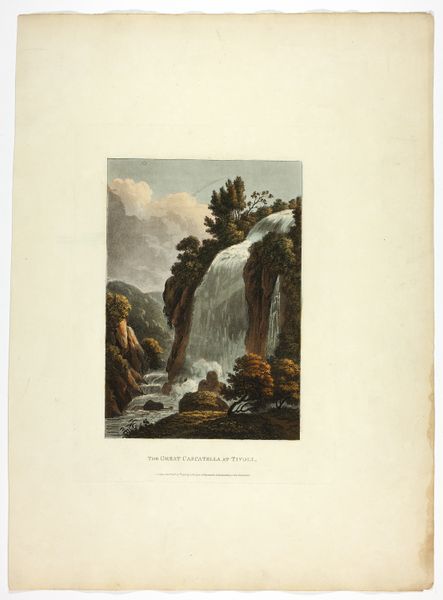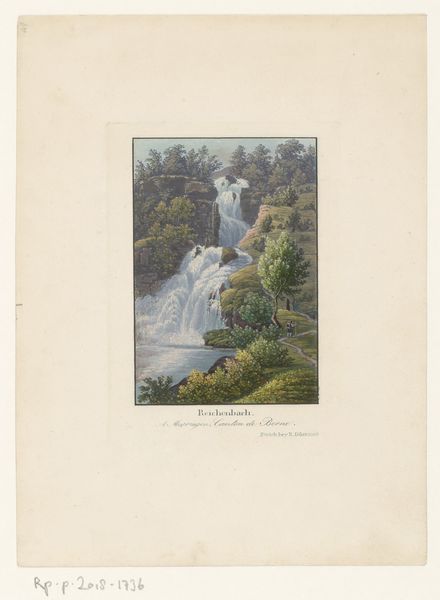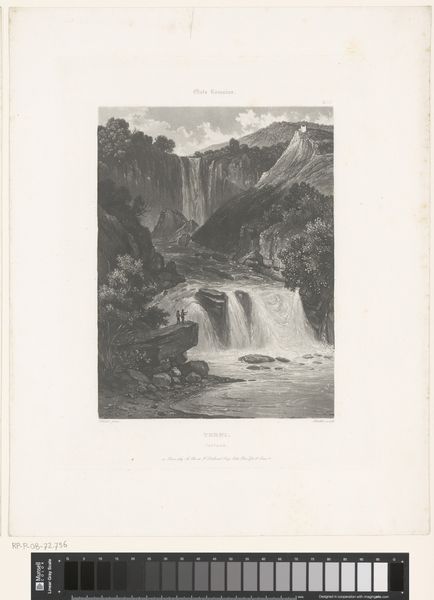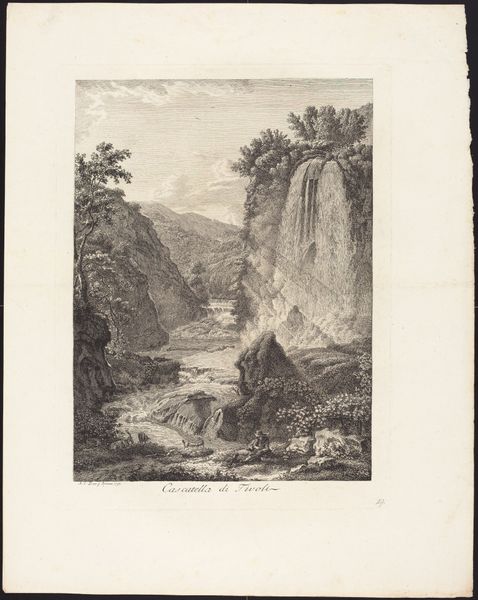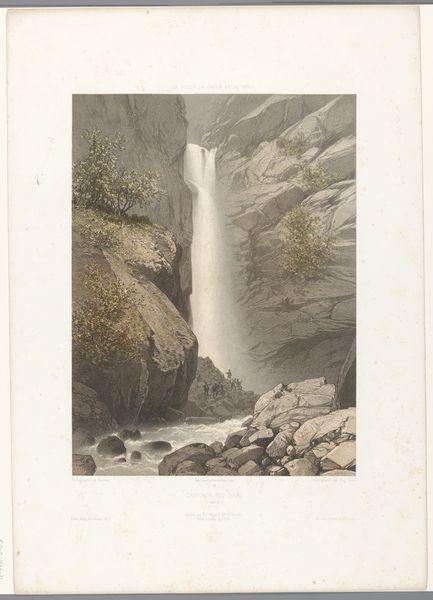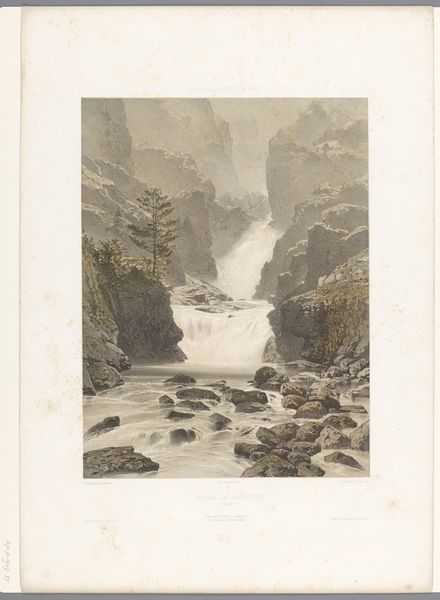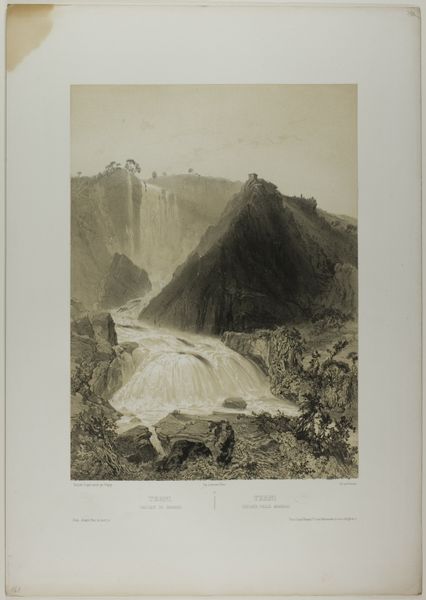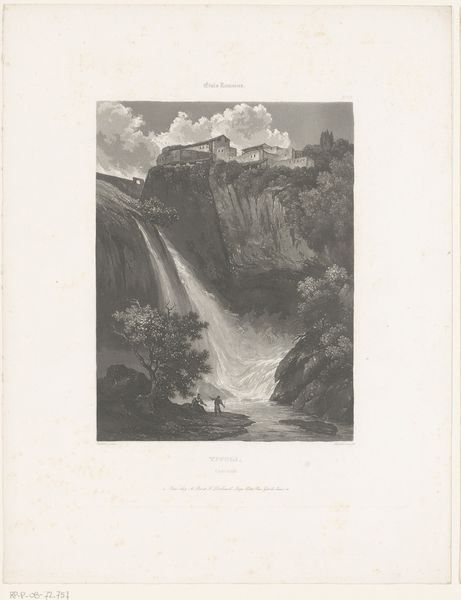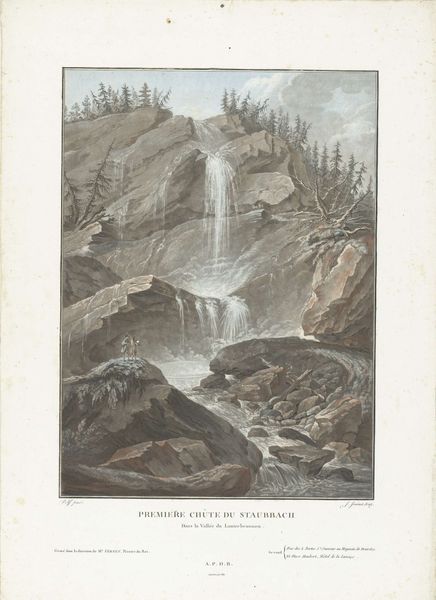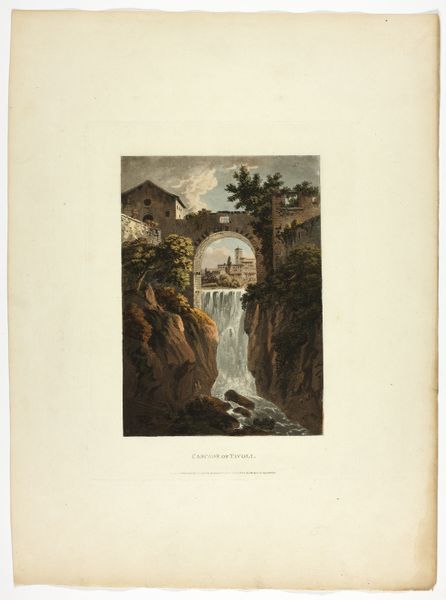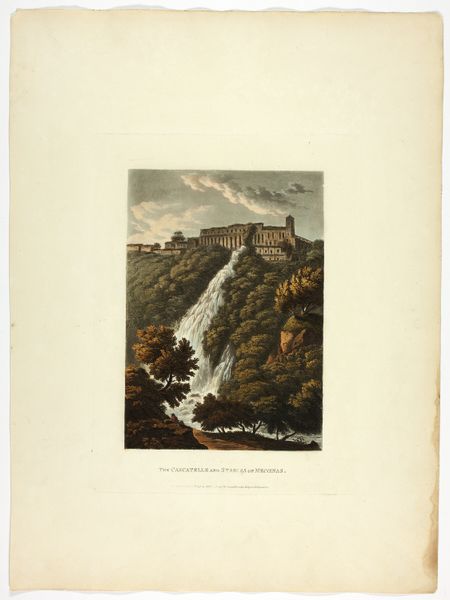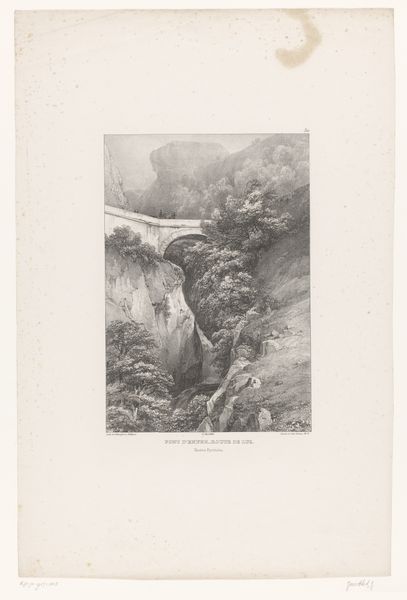
Cascade of Terni, plate fourteen from the Ruins of Rome c. 1798
0:00
0:00
drawing, print, etching, paper, watercolor
#
drawing
#
water colours
# print
#
etching
#
landscape
#
paper
#
watercolor
#
watercolor
#
realism
Dimensions: 448 × 330 mm (sheet)
Copyright: Public Domain
M. Dubourg made this print of the Cascade of Terni in the early nineteenth century, as part of his "Ruins of Rome" series. Its visual impact depends on the artist's expert handling of aquatint, a printmaking technique that mimics the effects of watercolor. Aquatint is an etching process used to create broad tonal effects. First, the artist grounds a copper plate with resin, then dips it in acid, which bites around the resin particles to create a network of tiny dots. The more the plate is bitten, the darker the tone. Dubourg then selectively blocked out areas of the plate, creating a range of values that give the image its atmospheric depth. Finally, he added color à la poupée, dabbing inks onto the plate and carefully wiping away the excess before printing. This print represents an industrial process. It would have been a medium that could be consumed and distributed widely, to those who wanted a keepsake of the landscape without commissioning a painting. Yet the skill and labor involved should not be overlooked. Dubourg treats aquatint not as mere reproduction, but as a refined craft in its own right.
Comments
No comments
Be the first to comment and join the conversation on the ultimate creative platform.
